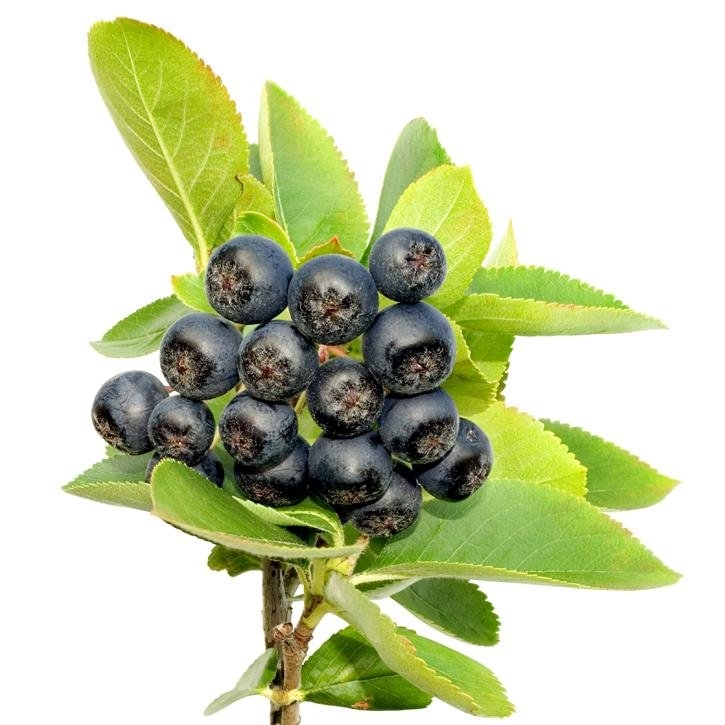Shrub up to two meters high, with hard and pale branches. The leaves are alternate, biaserradas, divided into 3-5 lobes and with a multitude of resinous glands on the underside. The reddish green flowers with 5 petals form dense clusters. The fruits are dark berries and have traces of calyx attached to them.
It is a spontaneous plant in Central and Eastern Europe; in temperate zones it is cultivated.
The leaves. The fruits and the oil obtained from its seeds are also used.
*Leaves
*Fruits
*Broths
*Seeds
*Leaves
*Fruits
*Oil
*Leaves
*Fruits
*Oil
Chanh PH, Ifansyah N, Chahine R et al. “ Comparative effects of total flavonoides extracted from Ribes nigrum leaves, rutin and isoquercitrin on biosynthesis and release of prostaglandins in the ex vivo rabbit heart.” Prostaglandins Leukot Med. 1986 Jun; 22(3):295-300.
Costantino L, Albasini A, Rastelli G, Benvenuti S. “Activity of polyphenolic crude extracts as scavengers of superoxide radicals and inhibitors of xanthine oxidase”. Planta Med. 1992 Aug;58(4):342-4
Fitt B, Smith G y Hornby D. “Acción fungicida de la sakuranetina, flavonoide presente en la droga de Ribes nigrum”. Plant Soil 66, 405(1982); CA 97, 195966 (1982).
Ulmann L, Blond JP et al. “Effects of age and dietary essential fatty acids-borage and black currant –(Ribes nigrum) on desaturate activities and on fatty acid composition of liver microsomal phospholipids of adult rats”. Lipids 1991 Feb;26(2):127-33.
Bertomeu MC, Crozier GL et al. “Selective effects of dietary fats on vascular 13-HODE synthesis and platelet-vessel wall interactions ». Thromb Res. 1990 Sep 1;59(5):819-30.
Black currant seed oil increases the availability of linoleic acid for the synthesis of 13-hydroxyoctadecadienoic acid, which has an inhibitory action on platelet adhesion to the vascular wall.
Tate GA, Zurier RB. “Supression of monosodium urate crystal-induced inflamation by black currant (Ribes nigrum) seed oil”. Agents Actions.1994 Nov;43(1-2):35-8.
Declume C. “Anti-inflamatory evaluation of a hydroalcoholic extract of black currant leaves (Ribes nigrum)”. J Ethnopharmacol 27,1-2: 91-8,1987 Nov.
Jonadet M, Meunier MT et al. “Flavonoids extracted from Ribes nigrum and Alchemilla vulgaris.Invitro inhibitory activities on elastase, trypsin and chymotrypsin. Angioprotective activities compared in vivo”. J Pharmacol.17,1:21-7,1986 Jan-Mar
Loew D, HeimshotV et al. Fitofármacos. Farmacología y Clínica de los diuréticos vegetales. En:”Diuréticos. Química, farmacología y terapéutica incluida fitoterapia”. Barcelona: Salvat, 1991:232-25
Suzutani T, Ogasawara M, Yoshida I, Azuma M, Knox YM. “Anti-herpesvirus activity of an extract of Ribes nigrum L”. Phytother Res 2003 Jun; 17(6): 609-13.
Garbacki N, Angenot L, Bassleer C, Damas J, Tits M. “Effects of prodelphinidins isolated from Ribes nigrum on chondrocyte metabolism and COX activity”. Naunyn Schmiedebergs Arch Pharmacol. 2002 Jun;365(6):434-41. Epub 2002 Apr 26.
Declume C. “Anti-inflammatory evaluation of a hydroalcoholic extract of black currant leaves (Ribes nigrum)”. J Ethnopharmacol. 1989 Nov;27(1-2):91-8.
Fitoterapia aplicada. JB.Peris, G.Stübing y B. Vanaclocha. Ilustre Colegio Oficial de Farmacéuticos de Valencia. 1995.
Plantas medicinales y drogas vegetales para infusión y tisana. S. Cañigueral, R. Vila y M. Wichtl. OEMF internacional 1989.
Fitoterapia: Vademecum de Prescripción. Plantas Medicinales. B.Vanaclocha. S.Cañigueral. Editorial Masson. 4ª edición.
Plantas Medicinales. El Dioscórides Renovado. Pio Font Quer.
Farmacognosia. 2ª Edición. Jean Bruneton.
Catálogo de Plantas Medicinales. Consejo General de Colegios Oficiales de Farmacéuticos. 2003.
Plantes Médicinales des Régions Tempérées. Bézanger-Beauquesne, Pinkas, Tork et Trotin. Maloine SA Editeur. 1980.
Carretero E. Compuestos fenólicos.:Flavonoides. Panorama Actual del Medicamento 2000;24 (234):525-8.
PDR for Herbal Medicines. Medical Economics Company, Montvale Second Edition, 2000; pp 94-6.
